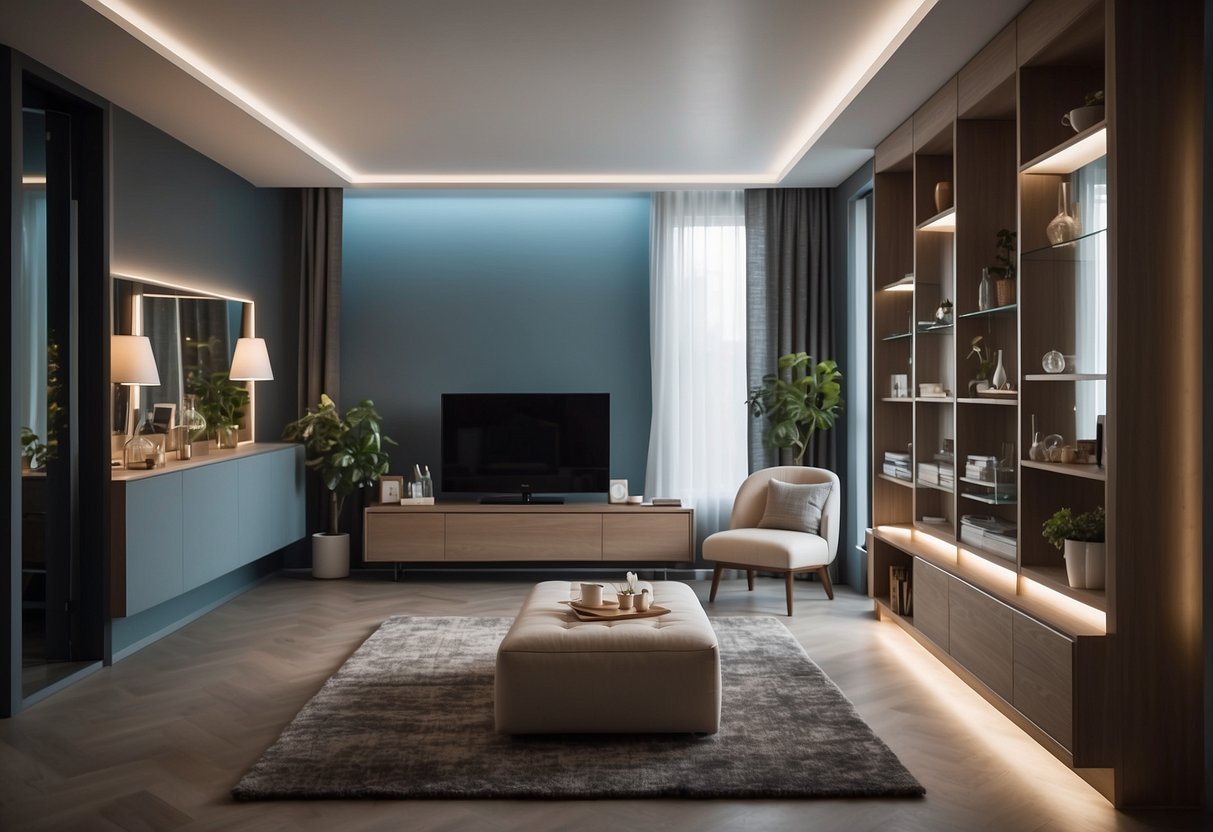How to Decorate a Small Space: Transform Your Home Efficiently
Tall Furniture Choices
Opting for tall furniture items like bookcases, wardrobes, and multi-tiered carts can significantly improve storage capacity. When space is limited horizontally, extending storage vertically makes practical sense. Tall bookcases can store a multitude of items from books to decorative pieces and can be placed in living rooms, bedrooms, or home offices.
Wardrobes with added vertical height maximize clothing storage, allowing for a better organization without crowding the room. Multi-tiered carts offer versatile storage solutions for bathrooms, kitchens, or workspaces, providing multiple levels of accessibly stored items.
Selecting furniture with a slimmer profile but more height helps maintain a spacious feel while accommodating more storage. This method ensures that every inch is utilized effectively, providing both functionality and an airy atmosphere.
Furniture Selection
Choosing the right furniture is essential for small spaces. Focus on versatile pieces that serve multiple functions and ensure that the size of the furniture complements the room without overwhelming it.
Multipurpose Furniture
Furniture with multiple uses can significantly enhance the functionality of a small space. Items like sofa beds, fold-out desks, and storage ottomans provide dual benefits, saving space while adding utility.
For instance, a sofa bed can be a comfortable seating area during the day and transform into a guest bed at night. Storage ottomans provide a place to sit while also offering hidden storage for blankets, books, or other items.
Additionally, consider furniture that can fold away or be tucked out of sight when not in use. Wall-mounted drop-leaf tables or fold-out desks can create extra workspace when needed and be easily stored away afterward. This adaptability makes it easier to maintain a tidy and functional living area.
Proportions and Scale
When decorating a small space, the proportions and scale of furniture are crucial. Oversized furniture can dwarf a room, making it feel cramped and cluttered. Instead, select smaller, well-proportioned pieces that fit the dimensions of the room.
Slim-profile sofas and armchairs can offer comfort without occupying too much floor space. Opt for furniture with exposed legs, as they create a sense of openness by allowing light to pass through, making the room appear larger.
Additionally, considering the height of furniture can also play a role. Low-profile furniture can give the illusion of higher ceilings, helping the room feel more spacious and airy. Choose carefully proportioned pieces that enhance the room’s functionality and aesthetic without overwhelming the space.
Strategic Decoration Techniques

Strategic decoration of small spaces involves thoughtful choices in color palettes and light, along with the clever use of mirrors to create a sense of depth and openness.
Color Palettes and Light
Choosing the right colors and lighting can make a significant difference in how spacious a small area feels. Light, neutral colors like whites, beiges, and soft pastels open up a room and make it appear larger. These shades reflect light better, making the space feel brighter and more inviting.
Incorporating natural light is crucial. Use sheer curtains or blinds that can be easily pulled back to let in as much light as possible. If natural light is limited, consider using artificial lighting in layers. Overhead lights, wall sconces, and floor lamps can work together to eliminate shadows and brighten the room.
Accent colors can add character without overwhelming the space. A small pop of color in accessories like cushions or wall art can create interest. This balance helps maintain an airy feel while giving the room personality.



